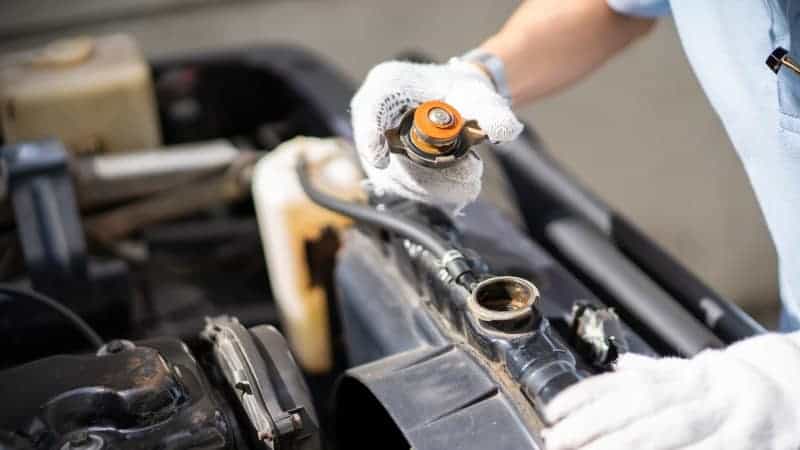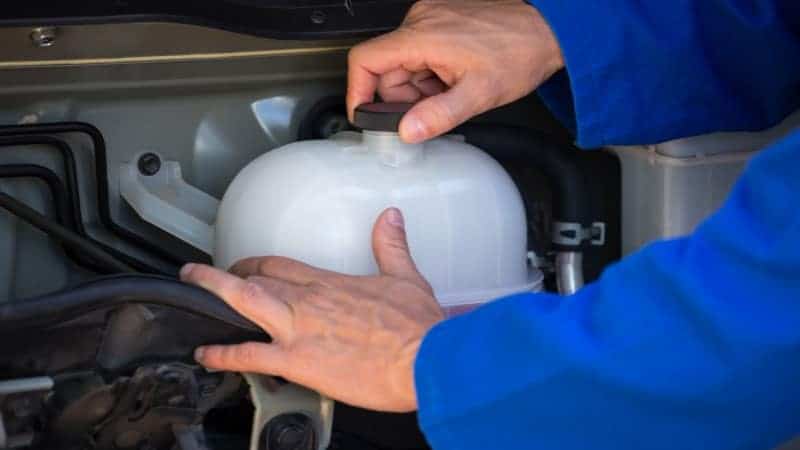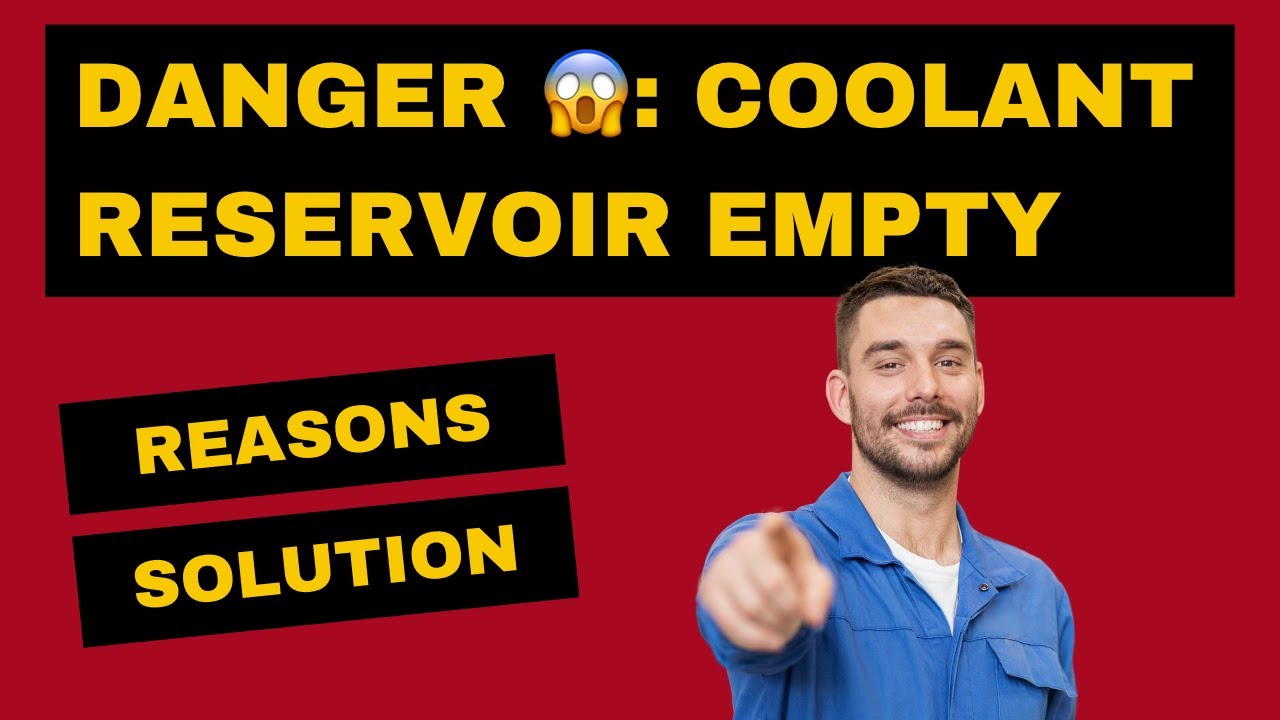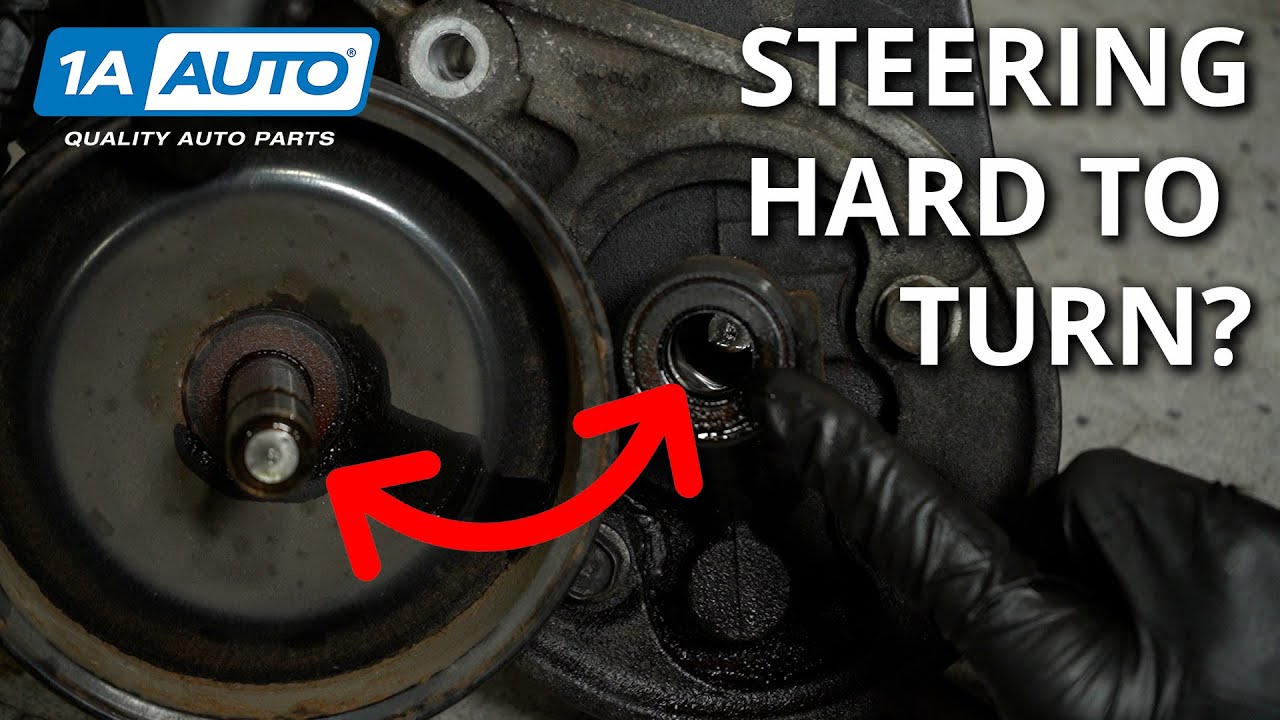In order for the engine to run efficiently, the cooling system is crucial. Cars can be cooled by either liquids or air. Having said that, an air-cooling system is not often found on vehicles.

There appears to be no coolant in the radiator, while the reservoir is full.
A blown head gasket is the most typical cause of a radiator that does not have any coolant while having a full reservoir. In the event of a head gasket failure, the coolant will be forced into the reservoir when combustion gasses seep into the cooling system. When the reservoir is full, any excess water will be directed to the overflow.
Nevertheless, the cooling system can experience problems due to other variables as well. It could be due to a malfunctioning cooling system component, such as a thermostat or radiator. Now we can examine these potential reasons.
Engine becomes too hot
This is a common symptom that indicates a problem with the air conditioning system. It might be because of a broken thermostat, a malfunctioning radiator, or some other connected problem.
Because of the engine’s poor performance, this issue might significantly limit the vehicle’s functionality. If the engine becomes too hot, it will smoke and could cause the car to break down unexpectedly
There might be a problem with the heater.
When the car’s heater stops working, it could mean that the radiator is low on coolant. The core’s hot fluid is what powers the heater. The hot fluid is releasing heated air into the vehicle as it flows.
Coolant leaking
Coolant leaking from the vehicle is another typical indicator that there is insufficient coolant in the radiator. It can be dripping from the hoses or the radiator. When a radiator gets a hole in it, the coolant level drops. The lack of coolant prevents it from absorbing heat, leading to engine overheating.
Coolant discoloration

If there isn’t enough coolant in the radiator, it could change color. Colors like green, yellow, and pink are common in engine coolant. If there is contamination, this color might turn into a thick brownish hue. Both the flow and the radiator are at risk of obstruction due to this.
The engine warning light
A significant rise in engine temperature can occur in the absence of coolant in the radiator. The driver will be alerted to the problem by turning on the engine check light. You need to find out what’s causing the engine damage and fix it before it gets worse.
Remaining smell
When you’re in or near your car, you could notice a pleasant aroma wafting through the air. People say that the coolant smells nice. Consequently, if you notice this odor, it could mean that coolant is leaking under your vehicle. To be confident of the cause, it’s best to conduct further investigation.
The engine exhaled smoke
In the event that white smoke is expelled from your vehicle’s exhaust. If this happens, it could be an indication that the radiator needs more coolant. But the harm is done when white smoke is seen coming out of the exhaust.
Therefore, you should not put off taking the required steps until you observe this indicator.
Radiator hose torn off
Always moving hot fluid through the radiator hoses. Consequently, the hoses will experience wear and tear over time. The hoses will probably wear out quickly, especially if your car is driven for long distances every day. Even worse, the pipes could burst, making coolant easy to pour out of them.
Broken gasket in the head
When the engine’s head gasket is damaged, the check light will come on. It is the job of the head gasket to keep the engine block and cylinder from leaking. Additionally, it makes it easier for coolant and oil to flow smoothly. Coolant can enter the combustion chambers and cause them to overheat if the head gasket fails.
Intake pipe gasket damage
On top of the engine you’ll find this part. The combustion chamber receives fuel and airstream from the intake manifold. The intake manifold incorporates a gasket at the point where it meets the engine. Your vehicle’s coolant could leak if this gasket gets broken.
Conclusion
The vehicle’s cooling system is designed to do more than only maintain a regulated engine temperature. It keeps the engine running smoothly and efficiently. One of the main reasons you should check the coolant level periodically is because of this. To avoid engine damage and handle situations like a radiator devoid of coolant despite a full reservoir tank, this is a lifesaver.





